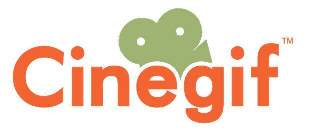 A Q&A with Cinegif CEO Graham McFarland. The Austin, Texas-based startup, which is an animated GIF platform for marketers and brands, announced last week that it has raised $500,000 in Seed funding from the Baylor Angel Network, the Houston Angel Network, and the Halo Fund. It was founded in 2011.
A Q&A with Cinegif CEO Graham McFarland. The Austin, Texas-based startup, which is an animated GIF platform for marketers and brands, announced last week that it has raised $500,000 in Seed funding from the Baylor Angel Network, the Houston Angel Network, and the Halo Fund. It was founded in 2011.
SUB: Please describe Cinegif and your primary innovation.
McFarland: Cinegif’s GIF Marketing Cloud enables marketers and advertisers to integrate high quality animated GIFs into their digital strategy. The company has also created the first DIY GIF platform for professionals. Users can now create a new and improved form of rich media composed of multiple GIFs, stills and hyperlinks. With real-time analytics and content optimization, Cinegif ensures compatibility across all digital channels and devices.
SUB: Who are your target markets and users?
McFarland: Marketing and advertising professionals, along with creative and advertising agencies.
SUB: Who do you consider to be your competition, and what differentiates Cinegif from the competition?
McFarland: There are no other platforms designed for marketers and advertisers with the capabilities of the GIF Marketing Cloud. Other rich media formats such as Flash, Java, and HTML5 are complex technical languages the average user cannot create, making the need for outsourcing part of projects a necessity for a marketer or advertiser. The content optimization of Cinegif’s new and improved rich media also ensures compatibility across all digital channels and devices without the need for plug-ins, something other formats such as Flash simply cannot do.
SUB: When was the company founded, and what were the first steps you took in establishing it?
McFarland: The company was founded in 2011 to build a business around patents that were awarded starting in 2008. Our patented technology creates compressed, high-quality, animated GIFs that can be used in a variety of digital marketing such as email campaigns, website design, landing pages, ecommerce, and social media. I was inspired by the resurgence of the GIF in 2011 and I took a trip to New Your City to meet with the artists that were reinventing the format. They were using them to promote fashion and music, and the creativity was amazing. I knew we had to bring this capability to the mainstream marketer.
SUB: What was the inspiration behind the idea for Cinegif? Was there an ‘aha’ moment, or was the idea more gradual in developing?
McFarland: Seeing for the first time a Cinemagraph created by photographers Jamie Beck and Kevin Burg.
SUB: How did you come up with the name? What is the story or meaning behind it?
McFarland: We looked at the combination of moving pictures, Cinema, and the animated GIF—the engagement of a video with the simplicity of a still image.
SUB: You just announced that you’ve raised $500,000 in Seed funding. Why was this a particularly good time to raise funding?
McFarland: We were able to show incredible traction with the first set of customers using a very simple feature to create a compressed, high quality GIF. This led to strategic partnerships with email platform provider PulsePoint and video management and licensing company T3Media. The feedback and ideas from our customers and strategic partners pushed us to take the next step and create a new rich media format using the animated GIF.
SUB: How do you plan to use the funds?
McFarland: To accelerate our sales and marketing efforts both on the SMB side as well as the agency side. Also to launch our new GIF Marketing Platform.
SUB: Do you have plans to seek additional outside funding in the near future?
McFarland: Maybe, depends on how quickly we grow and what opportunities exist as we gain additional traction in the marketplace.
SUB: What have the most significant challenges been so far to building the company?
McFarland: Choosing where to focus our sales and marketing efforts. Our product’s value proposition fits for any size business, however focusing our limited resources on what we think is the best target has been a tough decision process. Focus, focus and more focus is our main challenge right now.
SUB: How do you generate revenue or plan to generate revenue?
McFarland: Monthly subscriptions from both SMBs, starting at $29 per month, and agencies that can go as high as $6,500 per month.
SUB: What are your goals for Cinegif over the next year or so?
McFarland: Traction! Build an evergreen customer base as quickly as possible; get at least five of the top 20 ad agencies in the U.S. to adopt our platform.
Cinegif – www.cinegif.com












